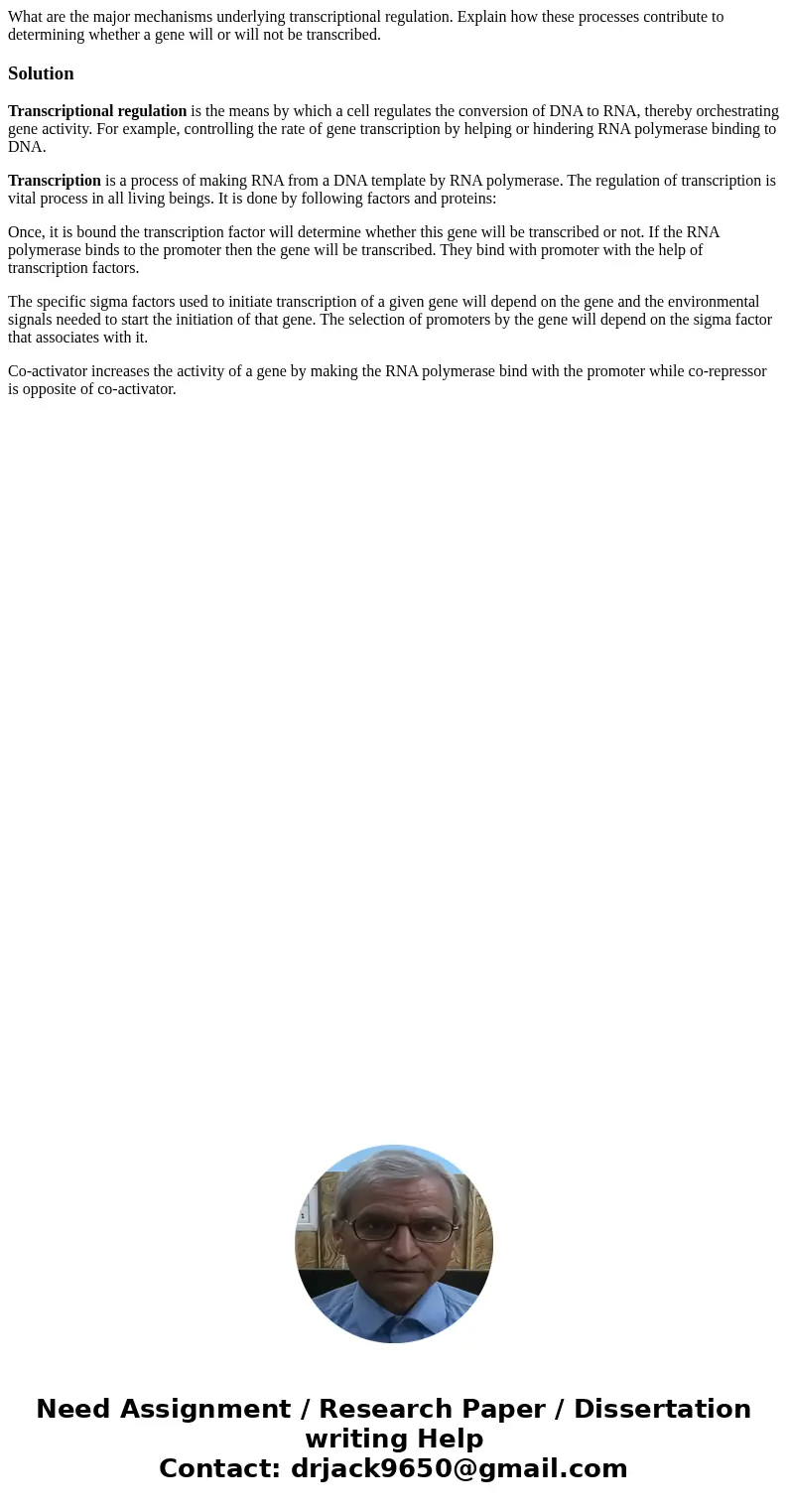What are the major mechanisms underlying transcriptional reg
What are the major mechanisms underlying transcriptional regulation. Explain how these processes contribute to determining whether a gene will or will not be transcribed.
Solution
Transcriptional regulation is the means by which a cell regulates the conversion of DNA to RNA, thereby orchestrating gene activity. For example, controlling the rate of gene transcription by helping or hindering RNA polymerase binding to DNA.
Transcription is a process of making RNA from a DNA template by RNA polymerase. The regulation of transcription is vital process in all living beings. It is done by following factors and proteins:
Once, it is bound the transcription factor will determine whether this gene will be transcribed or not. If the RNA polymerase binds to the promoter then the gene will be transcribed. They bind with promoter with the help of transcription factors.
The specific sigma factors used to initiate transcription of a given gene will depend on the gene and the environmental signals needed to start the initiation of that gene. The selection of promoters by the gene will depend on the sigma factor that associates with it.
Co-activator increases the activity of a gene by making the RNA polymerase bind with the promoter while co-repressor is opposite of co-activator.

 Homework Sourse
Homework Sourse